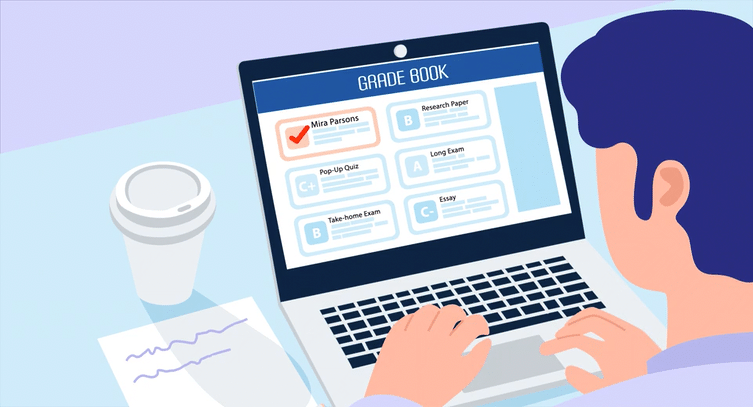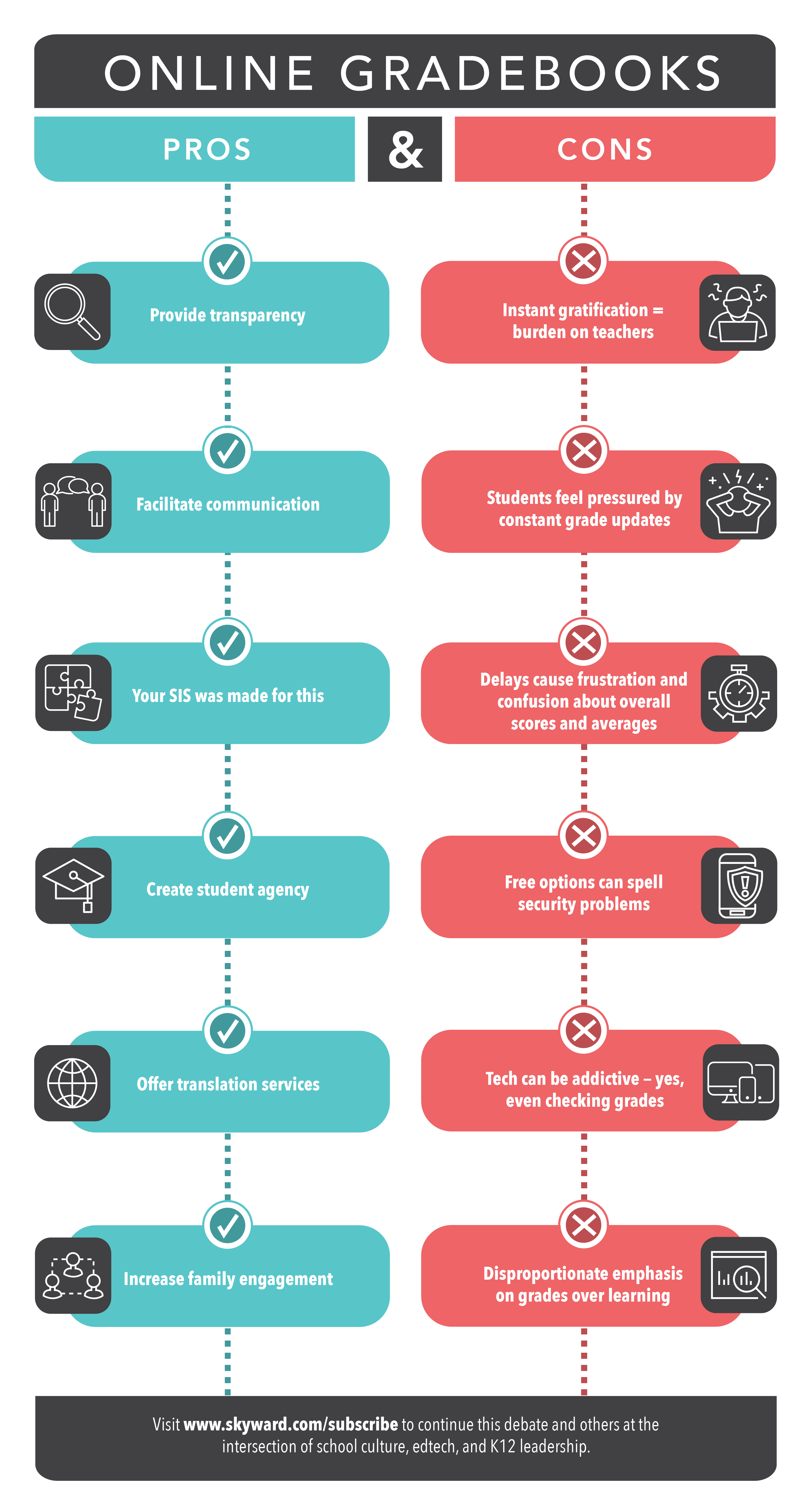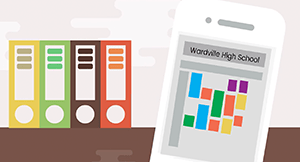
Once upon a time, teachers kept grades in literal books, carefully tallied. As technology evolved, so did the recordkeeping in schools. Enter the online gradebook, which displays scores and grades on-demand in real time. In the early days, it was fashionable for parents to be suspicious of them—a genteel parent should rather like to have an old-fashioned heart-to-heart with their children instead of using a brand-new grade as the dinnertime debate fodder.
However, this is a false equivalency. Live gradebooks have proven to be way more than a novelty and have plenty of positive qualities. Examine the pros and cons to see how online gradebooks fit into your school culture and family engagement plans.

Pros of online gradebooks
- Transparency: Progress is clearly visible in a central location, warts and all, to every involved party (FERPA-appropriate, of course).
- Communication: Since everyone is on the same page, it’s easy to bring up concerns or celebrate achievements.
- Your SIS was made for this: Student information systems are made to create a useful repository of student data and keep it safe.
- Student agency: Students who are able to monitor their own progress take a big step toward ownership of their education.
- Translation services: Gradebooks built into an SIS capable of translation engage families who may speak a primary language other than English at home.
- Family engagement is the primary benefit of online gradebooks updated in real time.
Cons of online gradebooks
- The burden falls on teachers: With live gradebooks, there’s an expectation that grades are instantly available. This isn’t always manageable or reasonable to expect.
- Pressure on students: Like any type of technology, overuse can lead to an extremely unhealthy relationship with grades, achievement, and self-esteem.
- Delays cause frustration and confusion: Because the gradebook includes automatic updates to overall scores and calculations including GPA based on each new score entered, a low score or typo can throw off calculations quickly.
- Low cost, high risk?: It’s difficult to know if a one-off free app is going to maintain its security and privacy promises. When it comes to student data, better to be confident in a secure and trustworthy partner.
- Tech can be addictive: For parents and students alike, compulsive use of online gradebooks spells trouble.
- Focus on grades, not learning, is the primary objection for online gradebooks.
Pros of online gradebooks are often predicated on best practices. Not only is it important to maintain a high level of use on the educator’s side, but it’s important to share guidelines for healthy use by families. This is a core component of school culture, not a task for the system administrator. Creating a healthy approach to online gradebooks requires district leaders, teachers, and staff to show emotional intelligence and communicate that while grades do matter, they are only one facet of student achievement and wellness. Since cons tend to be more emotional, imperfect use has big ripple effects that aren’t always easy to control once they are set off.
WHAT'S NEXT FOR YOUR EDTECH? The right combo of tools & support retains staff and serves students better. We'd love to help. Visit skyward.com/get-started to learn more.

|
Erin Werra Blogger, Researcher, and Edvocate |
Erin Werra is a content writer and strategist at Skyward’s Advancing K12 blog. Her writing about K12 edtech, data, security, social-emotional learning, and leadership has appeared in THE Journal, District Administration, eSchool News, and more. She enjoys puzzling over details to make K12 edtech info accessible for all. Outside of edtech, she’s waxing poetic about motherhood, personality traits, and self-growth.




